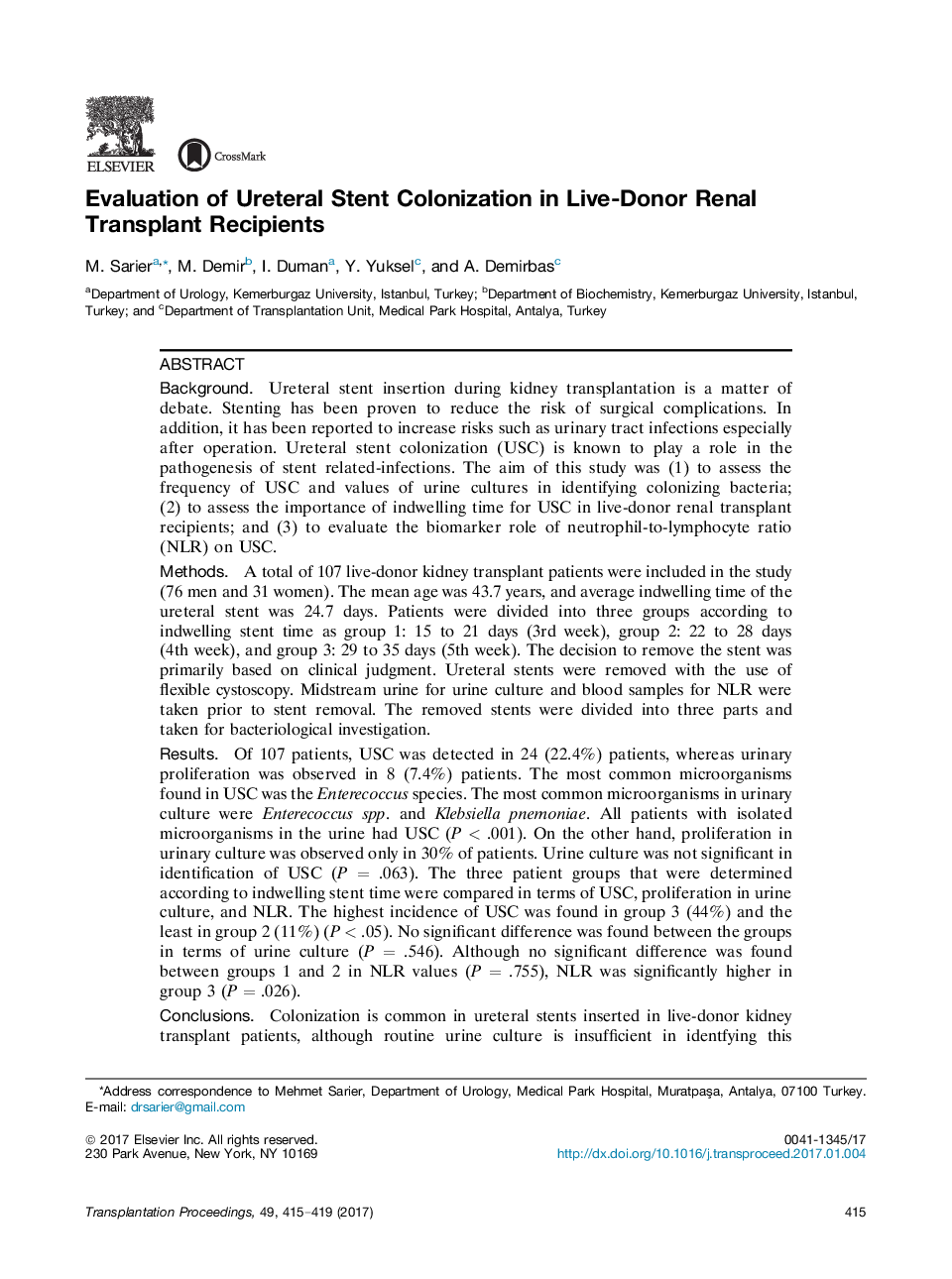| کد مقاله | کد نشریه | سال انتشار | مقاله انگلیسی | نسخه تمام متن |
|---|---|---|---|---|
| 5728846 | 1411672 | 2017 | 5 صفحه PDF | دانلود رایگان |
BackgroundUreteral stent insertion during kidney transplantation is a matter of debate. Stenting has been proven to reduce the risk of surgical complications. In addition, it has been reported to increase risks such as urinary tract infections especially after operation. Ureteral stent colonization (USC) is known to play a role in the pathogenesis of stent related-infections. The aim of this study was (1) to assess the frequency of USC and values of urine cultures in identifying colonizing bacteria; (2) to assess the importance of indwelling time for USC in live-donor renal transplant recipients; and (3) to evaluate the biomarker role of neutrophil-to-lymphocyte ratio (NLR) on USC.MethodsA total of 107 live-donor kidney transplant patients were included in the study (76 men and 31 women). The mean age was 43.7 years, and average indwelling time of the ureteral stent was 24.7 days. Patients were divided into three groups according to indwelling stent time as group 1: 15 to 21 days (3rd week), group 2: 22 to 28 days (4th week), and group 3: 29 to 35 days (5th week). The decision to remove the stent was primarily based on clinical judgment. Ureteral stents were removed with the use of flexible cystoscopy. Midstream urine for urine culture and blood samples for NLR were taken prior to stent removal. The removed stents were divided into three parts and taken for bacteriological investigation.ResultsOf 107 patients, USC was detected in 24 (22.4%) patients, whereas urinary proliferation was observed in 8 (7.4%) patients. The most common microorganisms found in USC was the Enterecoccus species. The most common microorganisms in urinary culture were Enterecoccus spp. and Klebsiella pnemoniae. All patients with isolated microorganisms in the urine had USC (P < .001). On the other hand, proliferation in urinary culture was observed only in 30% of patients. Urine culture was not significant in identification of USC (P = .063). The three patient groups that were determined according to indwelling stent time were compared in terms of USC, proliferation in urine culture, and NLR. The highest incidence of USC was found in group 3 (44%) and the least in group 2 (11%) (P < .05). No significant difference was found between the groups in terms of urine culture (P = .546). Although no significant difference was found between groups 1 and 2 in NLR values (P = .755), NLR was significantly higher in group 3 (P = .026).ConclusionsColonization is common in ureteral stents inserted in live-donor kidney transplant patients, although routine urine culture is insufficient in identfying this colonization. The most common microorganism detected in ureteral stent colonization was Enterecoccus spp. The 4th week was the most convenient time for stent removal time in terms of USC among the 3rd, 4th, and 5th weeks. In addition, increased NLR might have value as a biomarker for USC.
Journal: Transplantation Proceedings - Volume 49, Issue 3, April 2017, Pages 415-419
